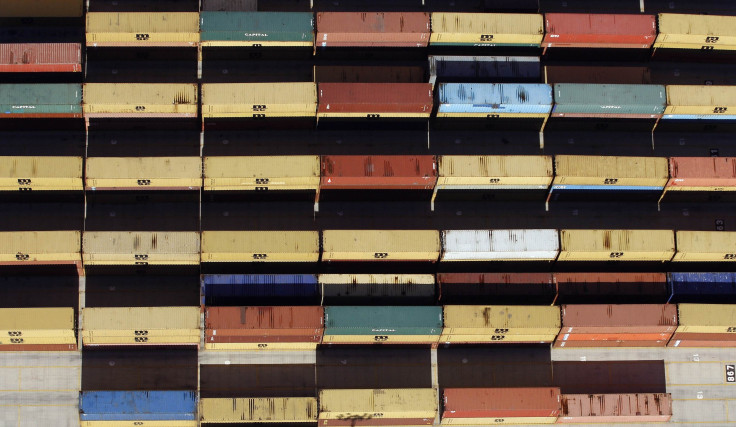Low Baltic Dry Shipping Index Doesn't Necessarily Mean Deflation

From the look of life on the seas, one might get the sense that the global economy is again bound for a potentially nasty downturn.
Recent months have seen a sharp drop in a widely watched gauge known as the Baltic Dry Index, essentially, a measure of how much cargo is being moved around the globe in freight vessels. A similar plunge in late 2008 offered a preview of the concerted worldwide downturn that for good reason became known as the Great Recession.
When ocean-going freighters -- massive, complex vessels each worth hundreds of millions of dollars -- start lacking for cargo it can be a sign that too many wares are being manufactured. And that can be a cause for falling prices, or deflation, a word that gives economists chills. When prices are falling, companies do not invest or hire, and national fortunes stagnate and sag, a dynamic that has gripped Japan for more than a quarter-century.
And yet, despite the precipitous drop in the Baltic Dry Index (BDI) since January, shipping experts are for now feeling OK about prospects for their industry and the larger fate of the global economy.
Rather than indicating a painful economic pullback, the drop in the utilization rate of the world's freighter fleet speaks to less alarming factors, and is actually part of a more positive upward trend.
“Deflation fears have spiked up again, but we think that’s yesterday’s risk,” reads a note Nick Nelson, a strategist at UBS.
Because the BDI tracks the average cost to ship raw materials by boat, the numbers describe the earliest stages of global commodity chains and offer a good look at global raw materials and infrastructure demand. Consequently, it’s often been used as a relatively accurate predictor of the global economy.
In May 2008, the BDI hit a record high of 11,793 before tumbling 94 percent by December, for many signalling the reality of the global economic crisis. Since January of this year, it has fallen 53 percent, sparking fears of yet another downturn.
“To those who would use the index for macroeconomic forecasting, a drop from above 1,500 in late March to its current level at 970 could be worrisome,” wrote Benzinga economics columnist Jake L’Ecuyer on Tuesday.
But those in the industry insiders say the drop is only temporary, and no cause for alarm.
“As a whole, the BDI as a predictor of global macroeconomic conditions is likely overstated,” said Nishan Mani, equity analyst at J.P. Morgan. “Underlying commodity demand and consequently emerging market growth could be strong in conjunction with a weaker BDI."
The current low is concerning, but not a sign for panic because the index is well-known to be relatively volatile.
For instance, January and February are typically weaker months because of Chinese New Year and seasonal bad weather in Australia. North American farmers harvest crops in the fall, and Ukrainian shipments tend to go out in the summer.
“Broadly speaking, January and February is the weakest time of year,” said Douglas Mavrinac, managing director of equity research at Jefferies LLC Maritime Group, citing problems ranging from the Chinese New Year holidays to tropical cyclones in Australia.
However, a drop in March is unusual. Between January and April 17 of last year, the index actually rose 25 percent to 885.
This is usually the time when agricultural shipments from South America start hitting the seas, but they’ve been delayed this year because of production problems.
“There isn’t a tremendous amount of cargo moving out of Brazil,” said one analyst, adding that Australia has produce more ore this year than usual, which makes it a cheaper option for Chinese importers.
Slowing Chinese demand constitutes another downward pressure.
“The real rhythm behind this is the fundamental indicators and the buyers, and it’s the buyers that are dragging down these rates,” Rui Guo, dry freight and resources analyst at ICAP Shipping in London, said.
A general lag in Chinese economic growth has decreased demand for infrastructure materials, which has been exacerbated by tight market conditions meant to control credit.
However, this doesn’t necessarily bode ill for shipping. If prices get low enough, China’s local producers will close down, which will create a higher demand for imports, driving up prices.
“Historically, if iron ore falls below $120 per ton, domestic producers in China tend to shut down, and imports account for a greater percent of total iron ore consumption,” said Guo, explaining that this would require more shipments and actually drive prices up.
In the long-term, things are actually looking up for the industry, despite what may be happening globally.
Global iron ore production was 66.4 million metric tons in the first quarter of 2014, an 8 percent jump from the same time last year. Iron ore shipments were also up 17 percent. Mining giant Rio Tinto PLC (LON:RIO) reported earnings last week, and forecast a massive increase in their capacity, which should drive up demand.
”Everybody in the shipping business knows it can do up and down very fast, but the long-term trend is pretty clear,” Guo said, adding that the broader outlook for 2014 is actually more positive than last year.
© Copyright IBTimes 2024. All rights reserved.












